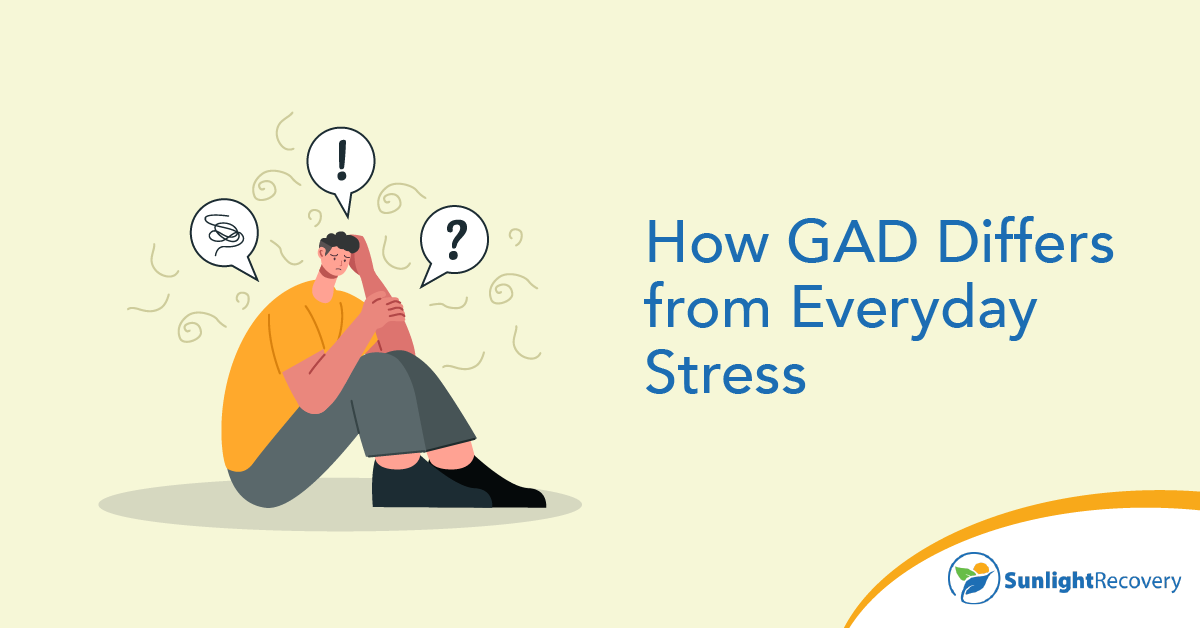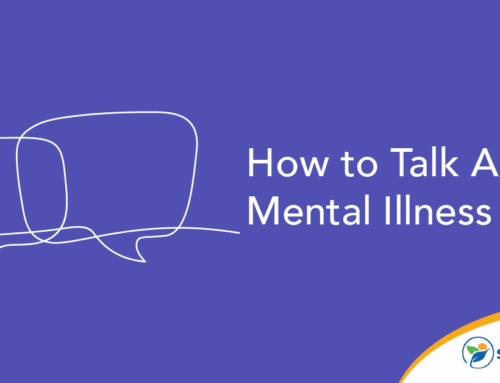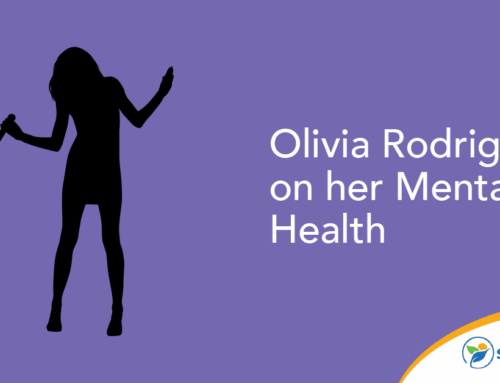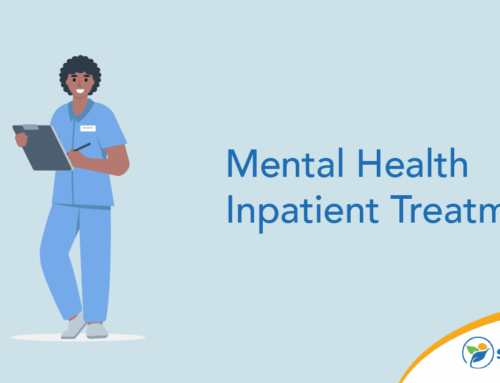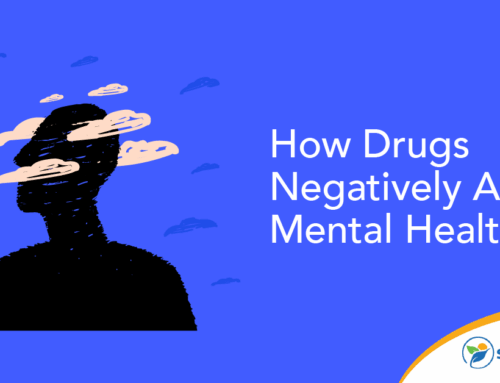Everyone experiences stress and anxiety from time to time. Whether it’s worrying about a work deadline, feeling nervous before a big presentation or being concerned about your child’s health, these feelings are a normal part of life. When does everyday stress cross the line into something more serious? Understanding the difference between anxiety vs. anxiety disorder can help you recognize when it’s time to seek professional help.
For millions of people, anxiety becomes a persistent condition that interferes with daily life. This is what medical professionals call, “Generalized Anxiety Disorder”, or “GAD”. GAD differs from the occasional stress we all experience. Let’s explore when you might need to consider reaching out for support.
Defining Generalized Anxiety Disorder (GAD)
Generalized Anxiety Disorder is more than just feeling worried or stressed. It’s a diagnosable mental health condition characterized by excessive, uncontrollable worry that persists for months at a time. Typical stress responses fade when the triggering situation passes, but GAD creates chronic anxiety that doesn’t always have a clear cause.
People with GAD often find themselves trapped in cycles of worry about everyday matters like health, money, family, work or even small routine issues. The anxiety feels overwhelming and difficult to manage, even when there’s no immediate problem to address. This constant state of worry can become exhausting and significantly impact your quality of life.
Understanding Anxiety vs. Anxiety Disorder
The primary difference between everyday anxiety and an anxiety disorder lies in intensity, duration and impact on daily functioning. Normal anxiety comes and goes based on life circumstances. You might feel anxious before a job interview or when making a major decision, but these feelings typically subside once the situation resolves.
Anxiety disorders, however, stick around long after the triggering event passes. They create persistent, excessive worry that you can’t control despite your best efforts. Where normal stress might keep you up for a night or two, GAD can cause sleep problems that continue for several weeks or even months.
Another key distinction involves the level of distress and interference. Normal stress might make you avoid certain situations temporarily, but you can still function in most areas of your life. Anxiety disorders can often prevent you from performing basic tasks or maintaining relationships and work responsibilities.
Key Differences Between GAD and Typical Stress
Several characteristics distinguish GAD from everyday stress:
- Duration. Normal stress typically lasts up to a few days or a couple of weeks. GAD symptoms persist for at least 6 months and often much longer without proper treatment.
- Proportion. Regular anxiety matches the situation’s actual risk level. GAD involves disproportionate worry compared to realistic threats or problems.
- Control. You can usually manage normal stress through coping strategies. GAD feels impossible to control despite your best efforts to redirect your thoughts or relax.
- Focus. Normal stress centers on specific issues. GAD involves worrying about multiple topics simultaneously, often without any logical connection.
- Physical symptoms. While stress can cause tension, GAD produces more severe physical reactions including heart palpitations, nausea and chronic fatigue.
Symptoms Unique to GAD
While stress and anxiety share some common symptoms, Generalized Anxiety Disorder presents specific warning signs:
- Persistent worry about multiple areas of life for at least 6 months
- Difficulty controlling anxious thoughts
- Restlessness or feeling keyed up
- Muscle tension that doesn’t ease
- Sleep disturbances beyond typical insomnia
- Digestive problems like irritable bowel syndrome
- Concentration difficulties affecting work or daily tasks
- Excessive fatigue even after adequate rest
When these symptoms persist, many people wonder, “Do I have GAD?”, but it’s important to note that experiencing some of these symptoms occasionally doesn’t mean you have Generalized Anxiety Disorder. The key lies in their frequency, intensity and impact on your life.
How GAD Impacts Daily Life
GAD affects every aspect of daily living. Unlike normal stress that might slow you down temporarily, GAD can bring your life to a standstill. Relationships suffer as constant worry makes it hard to be present with loved ones. Work performance declines when concentration becomes nearly impossible.
The physical toll of GAD extends beyond mental exhaustion. Adults who experience anxiety disorders at some point in their lives often develop physical health problems related to chronic stress. High blood pressure, heart problems and weakened immune systems become common complications.
Social isolation often increases as GAD symptoms worsen. You might cancel plans frequently, avoid social gatherings or withdraw from activities you once enjoyed. This isolation creates a cycle where anxiety increases, leading to more avoidance and deeper isolation.
Comparing GAD vs. Panic Disorder
While both are anxiety disorders, GAD vs. panic disorder shows distinct differences. GAD involves chronic, general worry without specific triggers. Panic disorder causes intense episodes of fear that peak within minutes, accompanied by physical symptoms like heart racing and shortness of breath.
People with GAD experience persistent anxiety that simmers constantly. Panic disorder brings sudden, overwhelming terror that can make you feel like you’re having a heart attack or losing control. While GAD affects daily functioning gradually over time, panic attacks can strike suddenly and feel immediately life-threatening.
Both conditions require professional treatment, but the approaches differ. GAD treatment focuses on managing ongoing anxiety, while panic disorder treatment addresses preventing and coping with acute episodes.
When to Seek Professional Help
Recognizing when stress becomes an anxiety disorder can be challenging. Consider seeking professional help if:
- Your worry feels impossible to control.
- Anxiety interferes with work, relationships or daily activities.
- Physical symptoms persist despite medical clearance.
- You avoid activities and situations due to excessive anxiety.
- Your quality of life has significantly declined.
- Self-help strategies haven’t provided relief.
Early intervention leads to better outcomes when you’re assessing symptoms of anxiety vs. anxiety disorder. Mental health professionals can provide proper diagnosis and create treatment plans tailored to your specific needs. Treatment might include therapy, medication or a combination of approaches.
Remember, seeking help doesn’t mean you’re weak or failing. It shows strength and self-awareness. The brain, like any other organ, sometimes needs medical attention to function properly.
Get Help Today
Taking the first step toward managing your anxiety can feel overwhelming, but support is available. Sunlight Recovery offers comprehensive programs designed to help you understand and manage your anxiety. Our team of experienced professionals can help you distinguish between normal stress and anxiety disorders, providing the tools and support you need to reclaim your life. Contact Sunlight Recovery today to get proper diagnosis and treatment so you can learn to manage your anxiety and enjoy life again.


